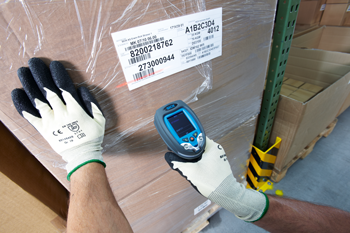The next time you're in a long checkout line, you may want to consider yourself lucky. Why? Although waiting may be an annoyance, your wait time could be twice as long if a little thing called a barcode hadn’t been invented.
According to Supply Chain 247, the first Universal Product Code (UPC), was used in a grocery store in 1974. The first item scanned? A pack of chewing gum.
Chew on that information for a bit…
UPC codes have not only had an enormous impact on the efficiency of retail businesses, but also customer satisfaction.
Prior to the barcode, store clerks entered pricing information into a system by hand. And, while that worked for a quite a while, it clearly wasn't the most error-proof process.
As store personnel tired of manually entering prices at the check-out counter, changing item prices and tracking inventory, the push toward some type of automated system increased.
The First Barcode
Long before the first pack of chewing gum was scanned, Joe Woodland and Bernie Silver developed a bull’s-eye bar code – appropriately named because of the code’s circular shape. The code, which was patented in 1952, didn’t quite take off like Woodland and Silver hoped, however.
In the article, History of Barcode Scanners, author Tom Reynolds states that the difficulty in printing this bar code kept it from becoming widely used.
Yet retailers, particularly grocery stores, were growing ever more impatient for an automated system to help solve their dilemma. This is when IBM engineer George Laurer entered the picture.
Laurer is credited with developing the 1D bar code that was used to scan that pack of gum back in 1974.
From Laurer’s barcode came an automated system that could not only be used in retail environments, but industrial plants as well.
Industrial Scanning
As the race for an effective bar code was heating up, engineers at SICK were right in the thick of it. In 1967, SICK released a bar code identification system for packing lists, folding boxes, tins and tubes in the pharmaceutical industry.
But how is a scanner actually able to read bar codes?
Bar code scanners are able to read a bar code by using a red light laser beam. As a result, there must be adequate contrast between the bars and the background, hence many barcodes feature black lines on a white background.
Throughout the years, the codes have not only evolved to include 2D, DataMatrix, QR and more, but the scanning technology has also significantly improved.
From using modular, advanced recognition technology (SMART) that makes it possible to identify damaged bar codes… to high-speed 2D code readers, SICK has continued to offer more advanced industrial solutions to improve read rates and productivity.
Infographic
Click the infographic below to expand, and to learn more, check out our post The Future of Barcodes and RFID.





